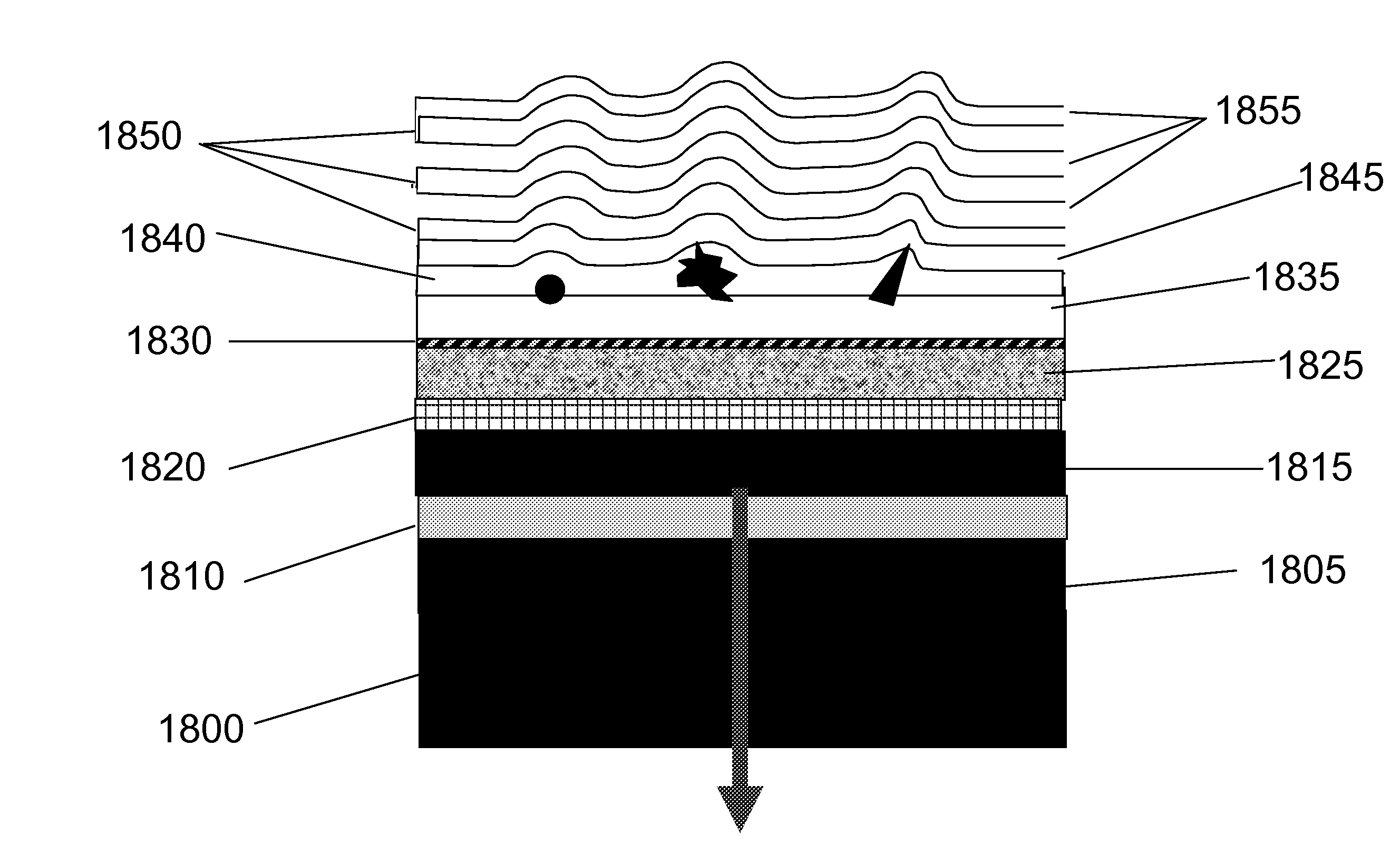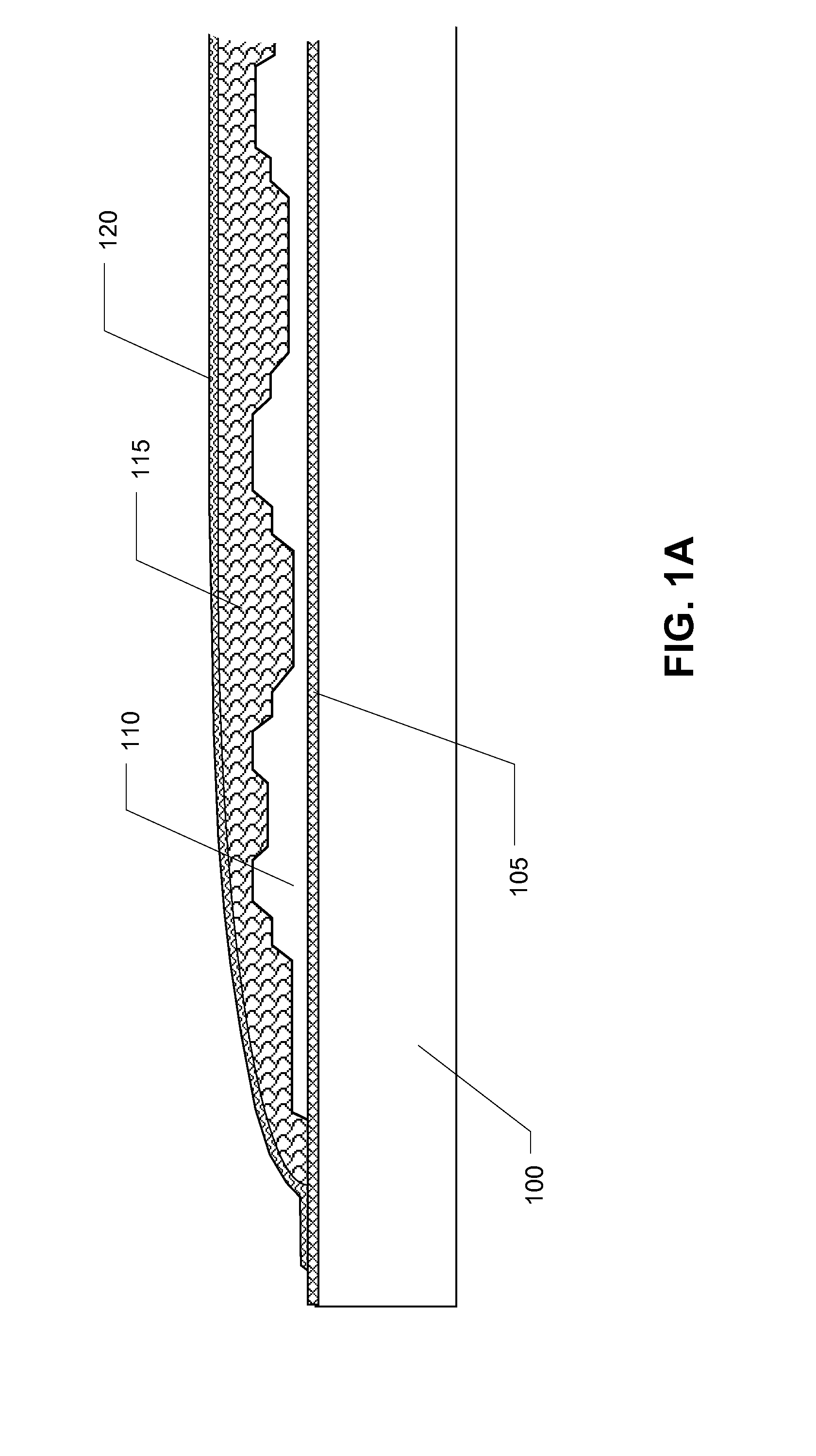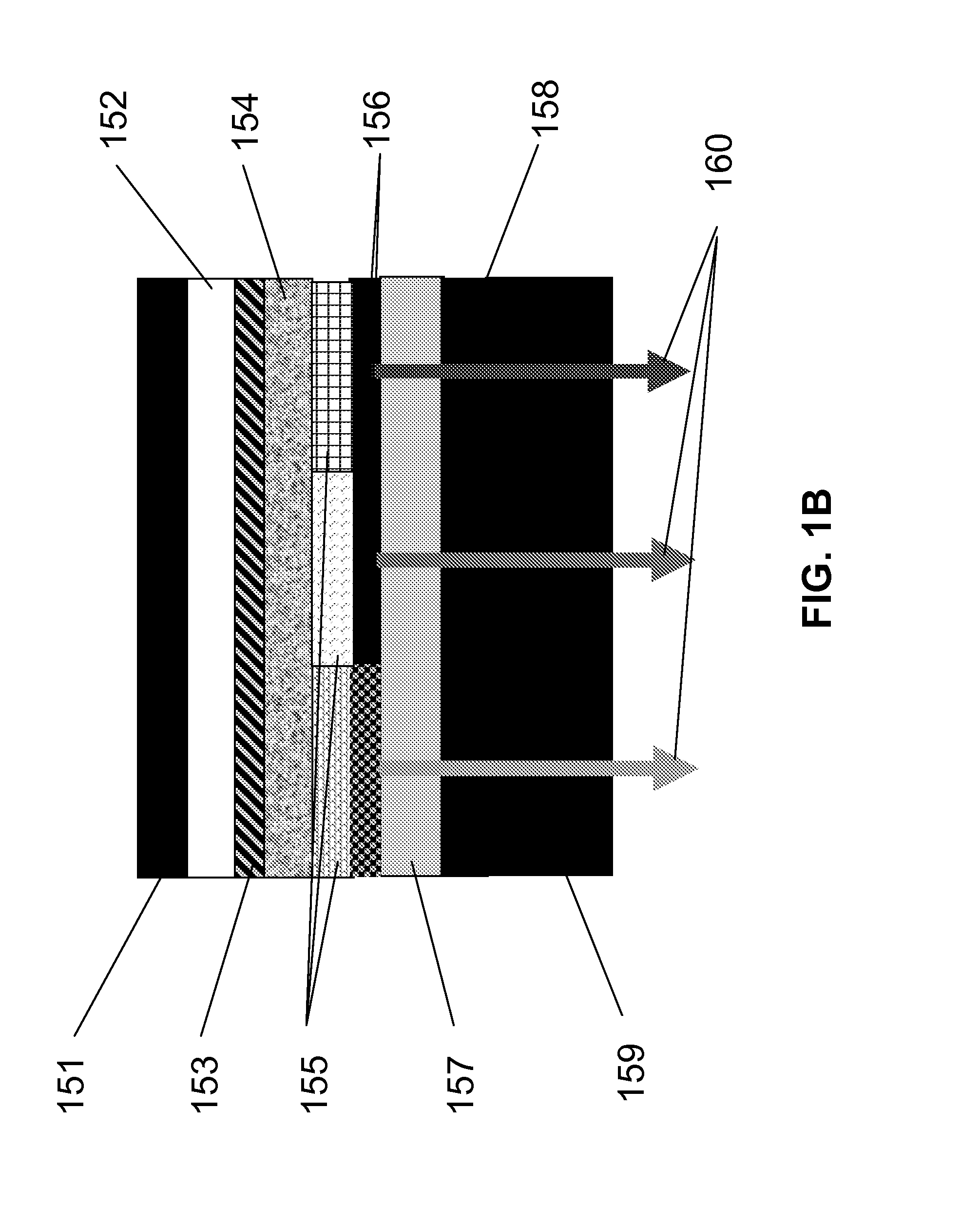Method for deposition of high-performance coatings and encapsulated electronic devices
a technology of encapsulation and electronic devices, applied in thermoelectric devices, sustainable manufacturing/processing, final product manufacturing, etc., can solve the problems of generating substantial heat, not being effective in promoting adequate adhesion, and being expensive to use such wettabl
- Summary
- Abstract
- Description
- Claims
- Application Information
AI Technical Summary
Benefits of technology
Problems solved by technology
Method used
Image
Examples
Embodiment Construction
[0048]The present invention affords coatings of large substrates, continuous webs, or wafers with flexible, transparent, adherent multi-layer film structures having at least three thin layers that have one or more of the following economically important benefits:[0049]Hermetic coatings of materials and devices sensitive to air or moisture that are virtually pinhole and leak-free at highly competitive cost in mass production. Such coatings are more valuable if they are also tolerant of flexure without cracking and tolerant of very hot, moist conditions.[0050]Optical coatings of flexible plastic films that tolerate flexure and / or large temperature variations without de-lamination, micro-cracking or discoloration.[0051]Hard, protective coatings on moisture sensitive or chemically sensitive devices that can withstand outdoor or highly variable temperature conditions without cracking or peeling.
[0052]An example of an application that benefits from this method is the need for ultra low pe...
PUM
| Property | Measurement | Unit |
|---|---|---|
| Temperature | aaaaa | aaaaa |
| Fraction | aaaaa | aaaaa |
| Linear density | aaaaa | aaaaa |
Abstract
Description
Claims
Application Information
 Login to View More
Login to View More - R&D
- Intellectual Property
- Life Sciences
- Materials
- Tech Scout
- Unparalleled Data Quality
- Higher Quality Content
- 60% Fewer Hallucinations
Browse by: Latest US Patents, China's latest patents, Technical Efficacy Thesaurus, Application Domain, Technology Topic, Popular Technical Reports.
© 2025 PatSnap. All rights reserved.Legal|Privacy policy|Modern Slavery Act Transparency Statement|Sitemap|About US| Contact US: help@patsnap.com



